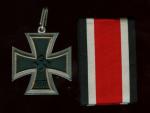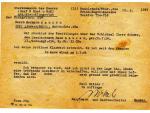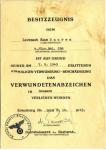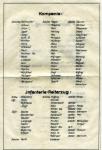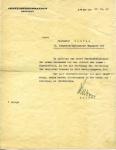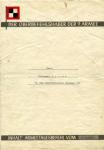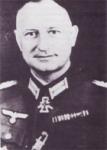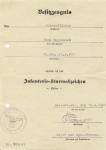-
Posts
654 -
Joined
-
Last visited
Content Type
Profiles
Forums
Blogs
Gallery
Events
Store
Everything posted by DDD777
-
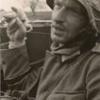
My collections of EK65
DDD777 replied to naoki matsumoto's topic in Germany: All Eras: The Iron Cross
-

Deutsch Kreuz in Gold
DDD777 replied to Alexandre's topic in Germany: Third Reich: State, Civil, NSDAP Awards & Decorations
Thank you Joe, DKiG is a unique and my favourite orden Better that DK, are only groups with DK owners For example : http://www.ww2awards.com/person/40974 ;) -

Deutsch Kreuz in Gold
DDD777 replied to Alexandre's topic in Germany: Third Reich: State, Civil, NSDAP Awards & Decorations
History of German cross in gold The German Сross in Gold (DKiG) was founded in September 1941. In comparison with the Iron Cross (EK) created in Prussia in 1813, this was a completely new award and instead of bearing any image of an Iron Cross the main symbol was a swastika. This award with its star burst form was so big and heavy it could be easily become detached and lost while fighting, especially in the close confines of a tank or an aircraft. Therefore a new version of DKiG in cloth was approved very soon. This cloth version was very popular in tank troops as the ordinary DKiG was usually left hanging on the edges of the narrow hatch. Due to its size, form and swastika this award was called "a party badge for shortsighted" or simply "the Fried egg". However this award had nothing to do with the party (NSDAP). The DKiG was always an award for courage and bravery which is why it is still permitted to be worn today but only in the 1957 version. This means instead of swastika as the central symbol there is an Iron Cross motif with oak leaf spray inside the wreath. Unfortunately, because of the enormous size of the swastika, the Allied forces, not knowing the reasons behind the award often suspected the wearers of being party members and oppressed the owners of this order. No wonder that even today there are Germans which consider this order a party reward. DKiG has a form of a star which according to the rules should be placed opposite to all other German orders - in the middle right side of the breast. From the status of the award we can suppose (unofficially) that it could rank between the Iron Cross first class and Knight's Cross. However, unlike the Knights Cross, which could be awarded to servicemen for a prominent act, for example, making a decision or performing an act of courage which contributed to the end of a battle and also which could also be awarded for successful battle or campaign management without directly participating in a fight, the DKiG always was an award purely for bravery. In accordance with directives but to tell you the truth, never published as such, the award could be handed to officers after eight acts of courage, bravery, and to other ranks after six, each of whom would have been awarded the Iron Cross first class. Therefore, a pre-condition of being eligible for this award was that the serviceman should already be a recipient of the Iron Cross first class. However this order should not be included in the Iron Cross award structure as it was often given to servicemen who had already been awarded the Knights Cross. Also in 'Directives on the procedure of awarding the German Cross in Gold' it is written: "the German Cross in Gold is not some intermediate order in the sequence of classes of the Iron Cross.". As the German Cross in Gold was founded only in September 1941, up to this point the Knights cross was awarded for exploits which thereafter would be rewarded by the DKiG. Another class of this order was also planned - the German Cross in Gold with Diamonds. -

Deutsch Kreuz in Gold
DDD777 replied to Alexandre's topic in Germany: Third Reich: State, Civil, NSDAP Awards & Decorations
German Cross in Gold Holders of Germany's Allies Croatia (2) Dukovac, Mato, 29.03.1944, Satnik [Oberleutnant], Staffelkapit?n 15.(kroat.)/JG 52 Galic, Cvitan, 23.07.1943, Porucnik [Leutnant], Flugzeugf?hrer i. d. 15.(kroat.)JG 52 Finland (5) Heinrichs, Axel Erik, 04.06.1942 [17.08.1943 ?], jalkavaenkenraali [General der Infanterie], Chef des Generalstabes der Finnischen Streitkr?fte Oesch, Karl Lennart, 05.08.1944, kenraaliluutnantti [Generalleutnant], Kommandierender General der Finnischen Isthmus-Streitkr?fte [Commander of the Isthmus Forces (III., IV. and V. Corps)] Laatikainen, Taavetti, 05.08.1944, kenraaliluutnantti [Generalleutnant], Kommandierender General Gruppe Maaselk? / IV. Korps Lundquist, Jarl Frithiof, 09.11.1943, kenraaliluutnantti [Generalleutnant], Kdr. der Finnischen Luftstreitkr?fte Valve, V?in? Lahja Richard, 14.03.1943, kenraaliluutnantti [Generalleutnant], Kdr. der Finnischen Kriegsmarine Hungary (1) L?vay, Gy?z?, ??, Captain [Hauptmann], Kdr. Ung. 102nd "Puli" Ground Attack (Assault) Group [equipped with Fw 190F-8] Italy (5) Bastico, Ettore, 05.12.1942, Maresciallo d'Italia [Marschall], Gouverneur von Libyen Carloni, Mario, 28.03.1943, Colonnello [Oberst], Kdr. 6. Bersaglieri-Regiment / 3. Celere Division "Principe Amedeo Duca d'Aosta" Fougier, Rino-Corso, 18.01.1943, Generale d'Armata [General], Chef des Stabes der ital. Luftwaffe [Capo di Stato Maggiore dell'Aeronautica Militare] Navarini, Enea, 21.12.1942, Generale di Corpo d'Armata [Generaloberst], K.G. XXI. Ital. Armeekorps Riccardi, Arturo, 18.01.1943, Ammiraglio d'Armata [Generaladmiral], Chef des Stabes der ital. Kriegsmarine Romania (4) Avramescu, Gheorghe, 25.10.1942, General de Corp de armata [Genera der ..], Kommandierender General des rum. Gebirgs-Korps Dabija, Nicolae, 10.02.1944, Capitan [Hauptmann], Chef 5./Inf.Rgt. 38 / 10. rum. Infanterie-Division Gheorgiu, Ervil, 11.02.1943, General de brigada [Generalmajor], Kgl. Rum. Flieger-Korps Mociulschi, Leonhard, 25.10.1942, General de brigada [Generalmajor], Stellv. Kdr. [deputy cdr.] 4. rum. Gebirgs-Division [already (since 6 Oct 42) Kdr. 3. Geb.Div. at time of award] Slovakia (2) Kovarik, Is[z]idor, 17.10.1943, Zastavnik [Feldwebel], Flugzeugf?hrer i. d. 13.(slow.)/JG 52 Reznak, Jan, 01.08.1943, Zastavnik [Feldwebel], Flugzeugf?hrer i. d. 13.(slow.)/JG 52 -

My collections of EK65
DDD777 replied to naoki matsumoto's topic in Germany: All Eras: The Iron Cross
65 is rare?? No :blush: -

Heer DKiG Hero Sauren Johan
DDD777 replied to DDD777's topic in Germany: Third Reich: Research, Documentation & Photographs
-

Heer DKiG Hero Sauren Johan
DDD777 replied to DDD777's topic in Germany: Third Reich: Research, Documentation & Photographs
-

Heer DKiG Hero Sauren Johan
DDD777 replied to DDD777's topic in Germany: Third Reich: Research, Documentation & Photographs
-

Heer DKiG Hero Sauren Johan
DDD777 replied to DDD777's topic in Germany: Third Reich: Research, Documentation & Photographs
Schutzwall Rank: Unteroffizier Unit: 13. / Infanterie-Regiment 476 Awarded on: March 15th, 1940 Details: Nr. 42083. KVK 2 Rank: Feldwebel Unit: 13. / Infanterie-Regiment 476 Awarded on: April 29th, 1941 -

Heer DKiG Hero Sauren Johan
DDD777 replied to DDD777's topic in Germany: Third Reich: Research, Documentation & Photographs
EK 1 Rank: Feldwebel Unit: 13. / Infanterie-Regiment 476 Awarded on: August 6th, 1941 EK 2 Rank: Feldwebel Unit: 13. / Infanterie-Regiment 476 Awarded on: January 21st, 1942 -

Heer DKiG Hero Sauren Johan
DDD777 replied to DDD777's topic in Germany: Third Reich: Research, Documentation & Photographs
-

Heer DKiG Hero Sauren Johan
DDD777 replied to DDD777's topic in Germany: Third Reich: Research, Documentation & Photographs
-

Heer DKiG Hero Sauren Johan
DDD777 replied to DDD777's topic in Germany: Third Reich: Research, Documentation & Photographs
-

Heer DKiG Hero Sauren Johan
DDD777 replied to DDD777's topic in Germany: Third Reich: Research, Documentation & Photographs
-

Heer DKiG Hero Sauren Johan
DDD777 replied to DDD777's topic in Germany: Third Reich: Research, Documentation & Photographs
-

Heer DKiG Hero Sauren Johan
DDD777 replied to DDD777's topic in Germany: Third Reich: Research, Documentation & Photographs
-

Heer DKiG Hero Sauren Johan
DDD777 replied to DDD777's topic in Germany: Third Reich: Research, Documentation & Photographs
-

Heer DKiG Hero Sauren Johan
DDD777 replied to DDD777's topic in Germany: Third Reich: Research, Documentation & Photographs
-

Heer DKiG Hero Sauren Johan
DDD777 replied to DDD777's topic in Germany: Third Reich: Research, Documentation & Photographs
-

Heer DKiG Hero Sauren Johan
DDD777 replied to DDD777's topic in Germany: Third Reich: Research, Documentation & Photographs



